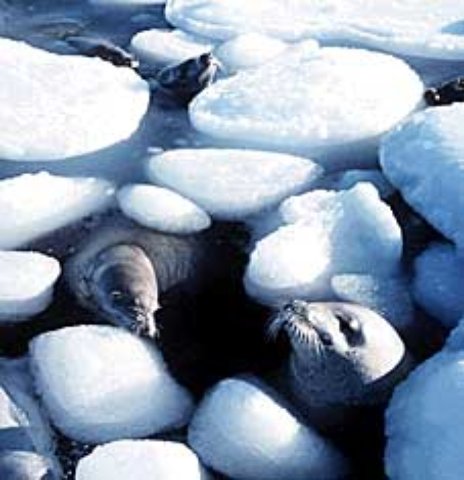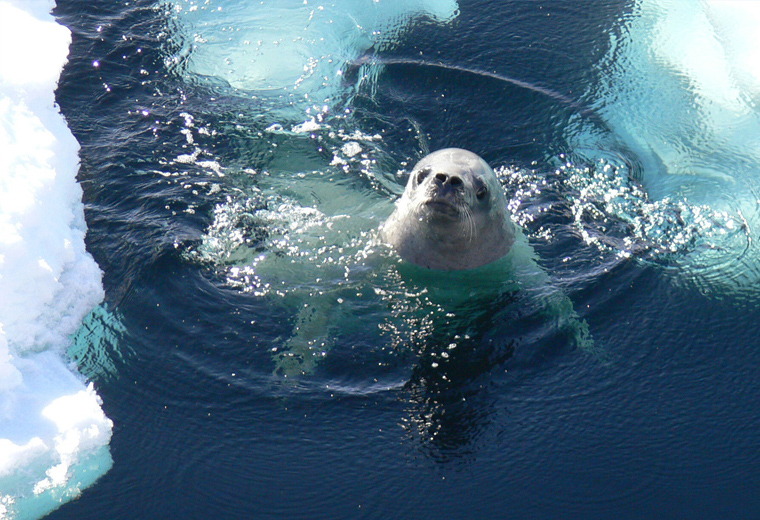
Common Name: Crabeater Seal
Scientific Name: Lobodon Carcinophaga
Phylum: Chordata
dorsal nerve cord - a bundle of nerve fibers which runs down the "back". It connects the brain with the lateral muscles and other organs.
notochord - cartilaginous rod running underneath, and supporting, the nerve cord.
Class: Mammalia
Family: Phocidae
Kingdom: Animalia
Genus Species: Lobodon Carcinophaga
Looks/ Characteristics: Crabeaters are mostly dark gray, but in the summer the coat can bleach to an almost white color. Normally they are lighter on the ventral side ( bottom) and darker on the dorsal side (top). Their faces are dog-like and they have chocolate-brown markings between their hip and rib, on their shoulders, and sides of their body.
Live: They reside in Antarctic Waters, but are known to travel to far distances, and are even known to travel quite far inland.
Habitat: Pack Ice, they like the cold temperature. Like in the picture above.
Diet: Crabeaters eat krill, squids and fishes. They prefer to feed at night, mainly at dusk and dawn, before the sun. They easily catch their prey with their special lobed teeth that help them to sieve the krill out of the water. Crabeaters can consume 20kg (44Ibs) per day, that is 20-25 times their body weight per year.
Size/ Weight: This mammal as an adult may reach 2.2-2.6m ( 8-10ft) in length and weigh up to 225kg (496Ibs). As a new born pup they vary in size but weigh about 2kg-110kg (44Ibs-242Ibs).
Population (Global): This also varies; some sites say that the population is in the hundred thousands, while others say that it is below 15 million. There is even a site that claims that the population is currently more than 30 million.
Breeding/Mating Season: This species mating season is sometime during the austral spring, and they give birth around September to 1 offspring.
Parental Involvement: Parents are only involved until they are done being weaned, which in only 2-3 weeks.
Gestation: The gestation period of this seal is about 11 months for a total gestation, with a little over 2 months of delayed implementation, where the parent supplies the things needed to survive.
Interesting Facts:
- The total amount of krill consumed by a crabeater seal is more than that of all the baleen whales put together
- More agile on land and ice and any other Antarctic seal
- Now the single biggest consumers of krill accounting for about 80 tons a year
- They have remarkable five-pointed teeth, the upper and lower rows of which interlock to form a strainer, so they can retain the krill while allowing the water to be expelled
- Within two weeks after being weaned the pups can gain up to 200Ibs in weight
